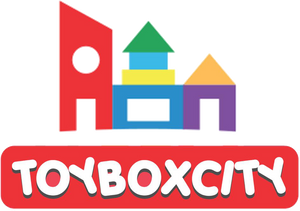Creative Play Ideas to Boost Imagination
Imagination is one of the most powerful tools a child can develop. It fuels creativity, problem-solving, and innovation, laying the foundation for lifelong learning and adaptability. Play is the natural medium through which children explore their world, experiment with ideas, and express themselves.
1. Storytelling Adventures
Storytelling is one of the oldest forms of creative play, allowing children to weave narratives from their imagination. Whether through spoken word, puppets, or drawings, storytelling encourages children to invent characters, settings, and plots.
-
Create a “story jar” filled with prompts like “a dragon who loves pizza” or “a robot lost in the forest.”
-
Use puppets or stuffed animals to act out stories.
-
Encourage children to illustrate their tales in comic-book style.
-
Record stories as audio plays for family listening.
Storytelling adventures help children develop language skills, creativity, and emotional expression. By inventing worlds and characters, they learn to think beyond the ordinary and explore endless possibilities.
2. Role-Playing and Dress-Up
Role-playing allows children to step into different identities, exploring professions, cultures, and fantastical roles. Dressing up enhances the experience, making it more immersive.
-
Provide costumes for doctors, firefighters, chefs, or astronauts.
-
Encourage children to create their own outfits from household items.
-
Set up themed play areas like a “mini hospital” or “space station.”
-
Use props like toy stethoscopes or cardboard rocket ships.
Role-playing builds empathy and social skills by helping children understand different perspectives. It also strengthens problem-solving abilities as they act out scenarios and navigate challenges in their imaginative worlds.
3. Building and Construction Play
Construction play stimulates imagination by allowing children to design and build structures. Using blocks, cardboard, or recycled materials, they can create anything from castles to cities.
-
Use LEGO or wooden blocks to build imaginative structures.
-
Provide cardboard boxes for forts, houses, or vehicles.
-
Encourage outdoor building with sticks, stones, and sand.
-
Incorporate challenges like “build a bridge strong enough to hold a toy car.”
Building play fosters spatial awareness, engineering skills, and creativity. It teaches children to experiment, adapt, and innovate, turning simple materials into complex creations.
4. Art and Craft Exploration
Art is a direct channel to imagination, allowing children to express themselves visually. Craft projects encourage experimentation with colors, textures, and forms.
-
Provide paints, crayons, and markers for free drawing.
-
Explore crafts like origami, collage, or clay modeling.
-
Encourage “upcycling” by turning old materials into art.
-
Create themed projects, such as “design your dream house” or “invent a new animal.”
Art and craft exploration nurtures creativity, fine motor skills, and emotional expression. It gives children the freedom to create without rules, boosting confidence and imagination.
5. Outdoor Nature Play
Nature is a limitless playground that sparks curiosity and creativity. Outdoor play connects children with the environment, inspiring imaginative exploration.
-
Organize scavenger hunts with clues and treasures.
-
Encourage building fairy houses or bug hotels from natural materials.
-
Use sticks and stones to create patterns or sculptures.
-
Invent nature-based games like “tree detectives” or “cloud stories.”
Outdoor play fosters imagination by encouraging children to see nature as a canvas for creativity. It also promotes physical health and environmental awareness.
6. Music and Dance Creativity
Music and dance allow children to express imagination through rhythm and movement. These activities encourage improvisation and emotional release.
-
Provide instruments like drums, tambourines, or homemade shakers.
-
Encourage children to invent their own songs.
-
Organize dance sessions with free movement to different genres.
-
Create “musical stories” where each sound represents a character or event.
Music and dance creativity enhances emotional intelligence, coordination, and self-expression. It helps children connect imagination with physical movement, creating a holistic play experience.
7. Science and Experiment Play
Science experiments can be highly imaginative, turning everyday materials into exciting discoveries. Playful science encourages curiosity and creative thinking.
-
Simple experiments like vinegar and baking soda volcanoes.
-
Build circuits with safe kits to explore electricity.
-
Create “magic potions” with food coloring and fizzing reactions.
-
Encourage hypothesis-making: “What do you think will happen if…?”
Science play blends imagination with critical thinking. It teaches children to ask questions, test ideas, and see the world as full of possibilities.
8. Collaborative Group Play
Group play fosters imagination through teamwork and shared creativity. Children learn to combine ideas, negotiate roles, and build collective stories.
-
Organize group storytelling circles.
-
Build large projects together, like cardboard cities.
-
Play improvisation games where each child adds to the story.
-
Encourage cooperative board games with creative twists.
Collaborative play strengthens communication, empathy, and leadership skills. It shows children that imagination grows when shared, creating richer and more diverse experiences.


